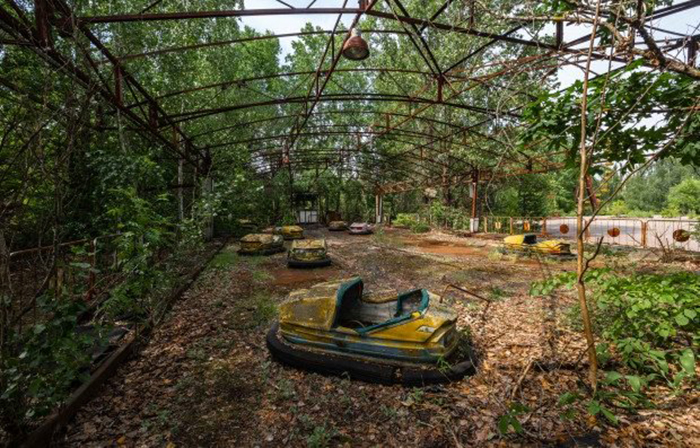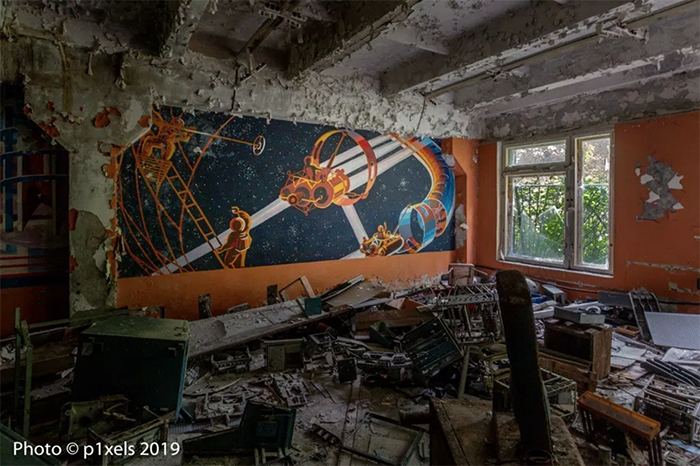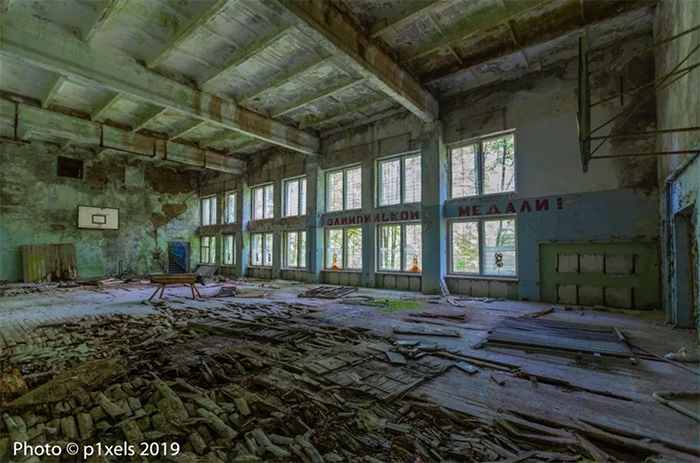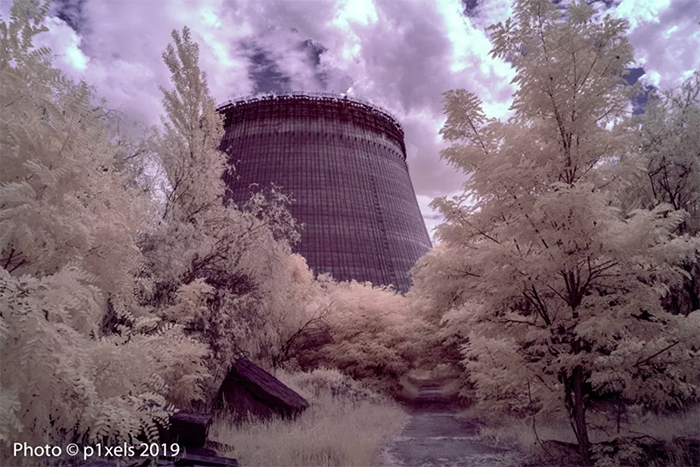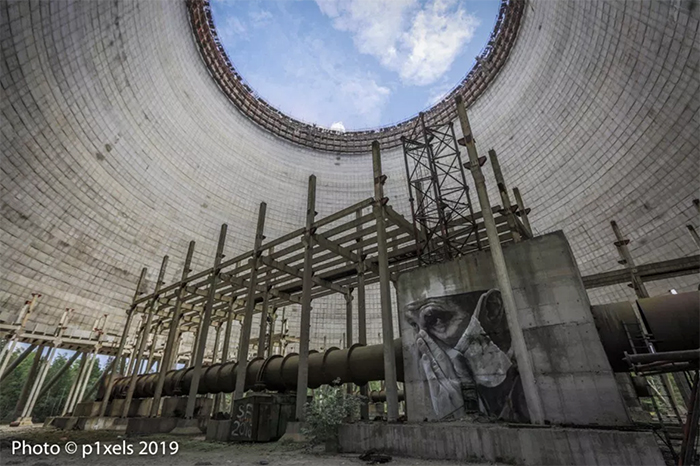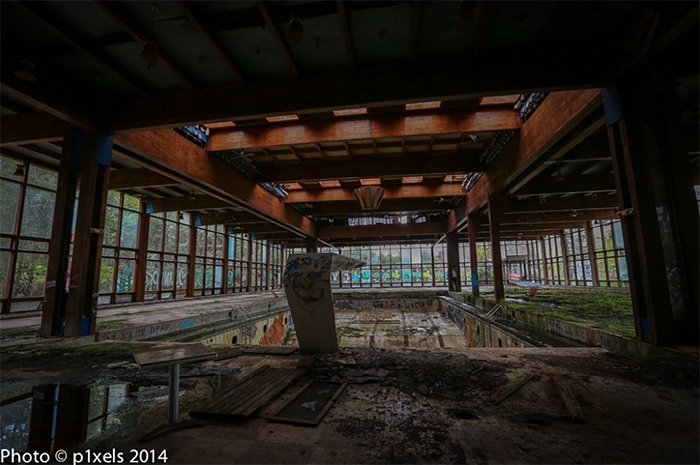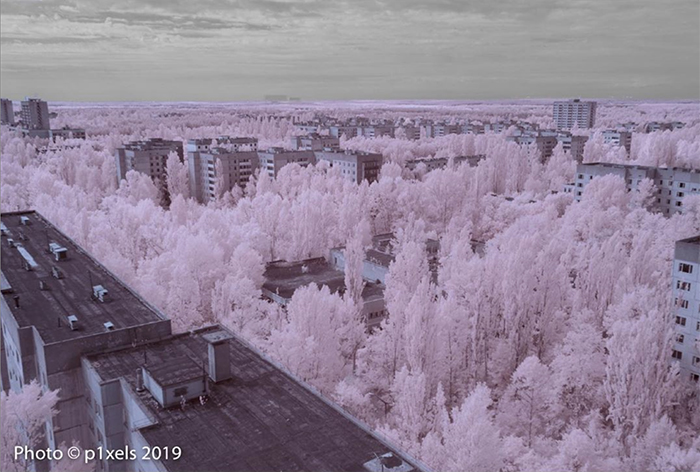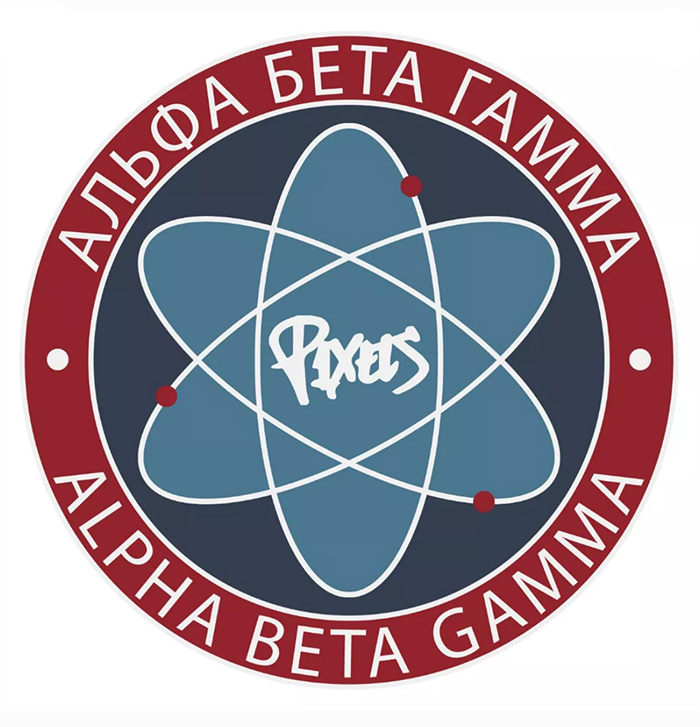This is radioactive
Within the shadow of the cooling towers, the power station was a hive of humdrum activity, but how easily routine veers off course. A task completed a hundred times becomes a mechanical oversight and suddenly there is no choice but to run. Breathe for a moment, and relish one last calm second before fear wraps its hands around your heart and squeezes tight.
This fear shoves panic out the way temporarily, and calmly you acknowledge that everything from this point forward might amount to no more than a noble gesture. Fear is the realization of the enormity. Reactor 4 had just gone nuclear, as the saying goes, and the radioactive meltdown has begun. The power station staff weren’t to know they were at the whim of a flawed design, but they understand that the worst kind darkness was about to take them. The reactors 500ton roof had been blown off by the force of the explosion and a violent but invisible fiend has been set loose. 4.68 billion years is the half-life of Uranium. An unthinkable certainty. The fire will take months to put out and 29 firefighters will die trying to extinguish it. Sadly, inevitably, they will not be the only casualties. Final estimates lie somewhere between 4,000 and over 90,000.
Imagine yourself trapped within the concrete corridors as Chernobyl goes up in flames. Red lights flash down in the deep as sirens blare and you beg for silence just to give you time to think. Inside the many buttoned control rooms, phone calls are placed to sleeping decision makers, getting them out of bed in a fog of grumbles. Fate is already ahead of them though, and now they’re playing catchup. Fear takes everything back to basics as people search for solutions and do their jobs, finding solace in the training they’ve done, the manuals they’ve read and the rules they follow. Surely this is where answers are found, and they will know what to do.
It’s 1:23am on April 26 1983.
Outside the gates, but still some distance from Chernobyl, the people of Pripyat stir in their beds. They may have heard the sirens before, shrugging it off now as just another drill. It might be complacency but perhaps it is hope, either way they can roll over and go back to sleep ignorant of the disturbing lies and inevitable dread coming their way. It takes 36 hours before Pripyat is evacuated. Once the enormity of the disaster is realized. Finally 43,000 people are given 2 hours to gather up their treasured possessions, what they can carry, before being herded on to buses and driven away from their homes forever. But they are told it will only be for a few days. In reality Pripyat won’t be inhabitable for 20,000 years. They’ve built a concrete dome over the remains of Reactor 4 now. It was finally finished in 2017. Sometimes I wonder if the ghosts of the place prefer to haunt alone, free to listen to the rustle of the leaves in the trees as nature slowly reclaims the concrete and steel for her own playground.
Now, 33 years later, Chernobyl is slowly becoming accessible again. It is by no means safe, and radiation still prowls the streets and hides in the doorways, but if you are willing to take a chance you can spend a short amount of time in the abandoned city. A delicate but eerie sadness pervades the place and you can almost touch the lost dreams left behind along with the forgotten toys, decaying library books, empty pools and overturned furniture.
One soul who dared to enter this still very dangerous place is the very talented P1xels, bringing back to us these amazing images from within the confines of this abandoned concrete wilderness .... and inspiring me endlessly.








